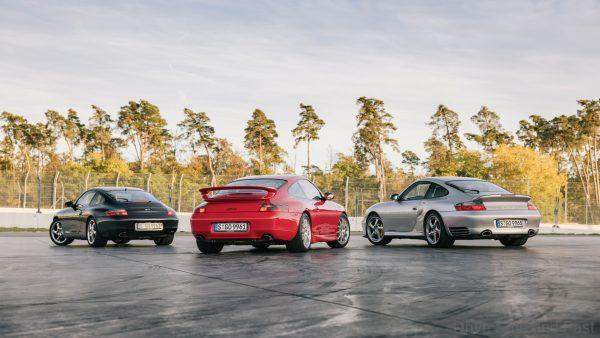Love it or hate it, the 996-era Porsche 991 was a turning point for the brand and the nameplate.
Porsche is one of those brands that isn’t afraid to make bold changes, but always makes sure it gets things right. If not the first time, then at least when the model update comes around. They were the first supercar company to venture into SUVs in a big way with the first Cayenne. They also took on battery electric vehicles with the Taycan with huge success.

However, it was the 996 generation Porsche 911 that really proved to everyone that the company could balance evolving technology with its heritage. 25 years have passed since this iconic model was revealed to the public. It’s a good time to reflect on this generation’s lasting legacy.

Let’s get some of the bad things out of the way first. The 996 was a huge departure in terms of styling and engine cooling philosophy. While Porsche were quick to sort out most of the styling issues with the 996 once the facelift came about, they never quite turned away from water-cooled engines. And that’s a good place to start talking about the net positives.

Engines Got Better
Every 911 since the 996 has used a water-cooled 6-cylinder boxer engine. As amazing as the air-cooled boxers were, air-cooled technology was as the end of the road at that point. It became increasingly difficult to extract more power or to deal with tightening emissions regulations. Plus, air-cooled four-valve boxer engines could not work due to hot spots that couldn’t be sufficiently cooled. Thus, a water-cooled four-valve boxer engine became the basis of every Porsche 911 since the 996. Today, even the base Porsche 911 Carrera has an output of 380hp and 450Nm of torque thanks to this break with tradition.

Birth Of The Boxster
The Porsche Boxster, today known as the 718 Boxster, was born as a result of the development of the 996. At the time Porsche needed a more affordable product to entice more buyers. The decision was made to co-develop a mid-engined roadster with the shared parts from the B pillar forward, which was unheard of at the time.

The new parts-sharing concept went beyond the front half’s design. It included suspension, electrical parts and overall packaging. The design team swelled to include 80 members at its peak to ensure the 996 and Boxster’s shared parts could be developed in time for its launch. The Boxster went on to exceed sales expectations and together with the 996, saved the company and spawned the Cayman.

911 Variant Explosion
While Porsche initially planned for the 911 Turbo and Carrera 4 models, other variants like the 911 GT3 were not planned. The 911 GT3 came about as a result of changing motorsport regulations, meaning road-legal homologation cars needed to be built for public sale. This was the birth of the distinction between regular road going 911s and motorsport-inspired 911 road cars that continues to this day.

Other variants that came about during the 996 era include the 911 GT2, the 911 Targa, the 911 Carrera 4S Coupé and the 3.6-litre-equipped 911 Turbo model, which featured ceramic brakes as standard for the first time in Porsche history. All said, over 175,000 996-era 911 models were sold.

